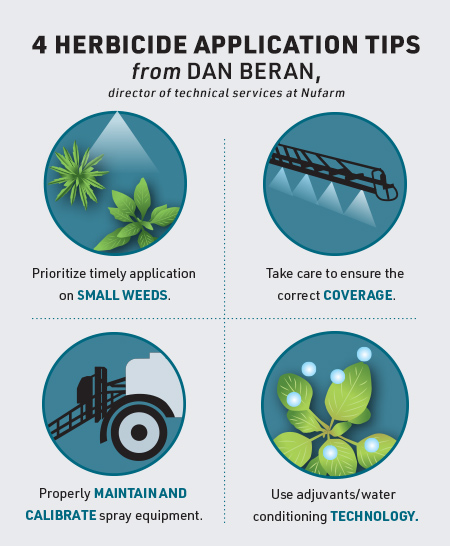Silver Lining to Tight Herbicide Supply: Chemistry Shifts Help Put Resistance on Its Heels

It’s like making lemonade from lemons. This time last year, many — if not all — retailers were put on allocated supplies of glufosinate and glyphosate due to supply chain disruptions and limited quantities.
This led to shifting those volumes away from burndown applications and strategically placing products where and when they were needed the most.
“2022 was a challenging year to supply all of our customers with products they needed to keep fields clean,” says Harlan Asmus, co-owner of Asmus Farm Supply.
This balance of supply and demand was difficult but created a silver lining: Tank mixes farmers hadn’t used widely or recently, which resulted in a learning curve, but also brought strong weed control results and strengthened farmers’ approaches to weed resistance.
“We have several success stories of how farmers applied products differently,” says Mark Foster, marketing manager for corn and soybeans products in the Midwest for AMVAC. “Generally, this meant they used more or different modes of action at different times and in different combinations to achieve desired weed control.”
The above trifecta is a tool in the toolbox to extend the efficacy for herbicides and fight resistance.
More than 90% of waterhemp populations collected in Iowa fields in 2019 were multiple-resistant to three herbicide groups (HGs 2, 5, and 9), reports Iowa State Extension. Nearly 30% of populations had stacked resistance to five herbicide groups (HGs, 2, 5, 9, 14, and 27).
Also, giant ragweed and horseweed/marestail are major glyphosate-resistant weeds in Iowa crops.
Diversifying herbicide programs is the easiest and most important strategy to manage herbicide resistance.
Asmus reports his team is working even closer with growers to talk about crop protection plans. In recent years, he says the time spent with growers making product plans has doubled.
“In the past, we could get what we ordered in the crop protection industry,” he says. “This past year I made the decision to not sell anything we did not physically have.”
Foster is encouraged by the level of weed control farmers saw with products outside of their regular go-to tank mixes. Additionally, he says, the product performance in 2022 will encourage farmers to consider the products in 2023 as the supply chain struggles are likely to continue.
AI availability is more stable now versus six months ago, says Dan Beran, director of agricultural technical services at Nufarm. While inert supply and rising costs persist, the industry is equipped to respond.








